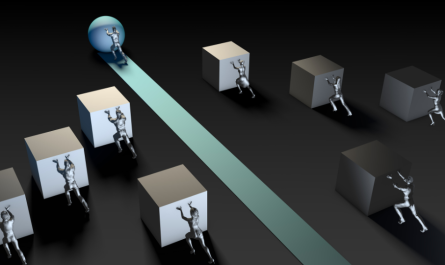Design Is a Marathon: Why Strategic UX Is the Future of Industry Innovation
UX360 Speaker Interview with Jean-Baptiste Kaloya, VP Design & Research at Bpifrance

With over a decade of experience shaping digital experiences, Jean-Baptiste leads design and research at Bpifrance, France’s state bank for entrepreneurs. His background in computer science engineering and entrepreneurship provides a unique analytical perspective on design leadership. Previously, he worked on projects at Lyft and Stanford Research Park and held key roles at BNP Paribas and Orange Bank. He also founded Hype!, a platform curating outstanding locations in architecture, gastronomy, and art. Based in Paris, Jean-Baptiste draws inspiration from industrial design, traditional craftsmanship, and technology.
UX360: What motivates you to join the conference and what are your expectations?
Jean-Baptiste: Design conferences are like a creative jolt—an espresso shot for my brain. It’s where I reconnect with the design community, hear fresh perspectives, and get inspired by the experiments (and missteps) of others. It’s also a great way to meet new talent as my team continues to grow. Last time I attended a conference, I ended up mentoring a senior designer into leadership—though I promise I’m not just there with a recruitment net! Mostly, I’m looking forward to sharing stories, learning from others, and leaving with a head full of ideas to bring back to my work.
UX360: Without giving too much away – what is the core message of your talk and what would you like delegates to remember?
Jean-Baptiste: In today’s landscape, where the challenge is often to “deliver more design with fewer resources,” my talk will focus on how to amplify design’s strategic role within organizations. No buzzwords, no endless slide decks—just honest experiences, including a few lessons learned the hard way.
I’ll share how we’ve refined and applied a modern design toolkit to drive tangible business results. From strategic research that doesn’t vanish into obscurity to documentation practices that people actually engage with, and service blueprints that go beyond aesthetics to become true alignment tools. We’ve discovered that when designers sharpen their business sense and excel at synthesizing knowledge, they unlock unique opportunities—suddenly, it’s not just about making things look good; it’s about connecting insights across the company in ways no one else can.
The main insight? Design is about playing the long game. As I like to put it, design isn´t a sprint- it´s a marathon.
UX360: How has this impacted your own work and your organisation?
Jean-Baptiste: It’s been transformative. Over time, I’ve seen design grow from being a small player in the room to shaping the larger conversation. At my current role and beyond, this shift has been about more than just having a seat at the table—it’s about redesigning how the table functions (and it’s a constant challenge!)
The most rewarding part? Seeing non-design colleagues start applying design processes in their own work. When you walk into a meeting, and someone from compliance starts framing a problem like a designer, you know you’re making an impact. That’s when the magic happens.
UX360: How has UX as a practice evolved in the last couple of years, and how would you like to see it evolve in the next few?
Jean-Baptiste: UX has undergone a fascinating transformation—from being the team that makes things look pretty to becoming a strategic driver of business decisions. It’s like we’ve graduated from decorating the house to helping design its foundation and structure.
What’s changed most dramatically is the integration of business and user needs. Design isn’t just about crafting interfaces anymore, but about creating delightful experiences that connect organizational capabilities with market opportunities.
I remember when I was building Hype, my first startup—what used to take me two weeks of Swift coding I can now accomplish in less than three hours thanks to AI tools. This acceleration is so exciting and is going to shift our role even further from execution to strategy.
Organizations have evolved alongside this shift. The most forward-thinking companies no longer see design as a service (or worst as a cost center) department but as a core business function.
Looking ahead, I’d like to see UX continue this journey toward becoming even more integrated with business strategy while maintaining its human-centered soul. As AI takes over more of the execution work, our unique value will increasingly be in uncovering those deeply emotional, nuanced aspects of human behavior.
UX360: Given this evolution, what are two expected and two less obvious skills UXers should possess, and why?
Jean-Baptiste: The expected skills first: storytelling and communication have become absolutely fundamental. It’s never really about the design—it’s about persuading people to use it.
But the less obvious skills? First, I’d say business fluency. Understanding revenue models, organizational politics, and how decisions actually get made—this is what separates influential designers from those who just make pretty things that never see the light of day. The ability to reframe business problems into design opportunities is the core of the job.
Second—and this might surprise some—is what I call “relationship cartography.” The most effective designers I know maintain mental maps of who knows what, who controls which resources, and who is allied with whom. Traditional org charts don’t capture this reality. When you can navigate these invisible networks, suddenly you’re solving the right problems with the right people.
The relationships you nurture and the systemic changes you enable will always outlast the immediate outputs. That’s where these less obvious skills become your secret weapons.
UX360: Last but not least, where do you find learning, inspiration and information? Can you share some of your favourite resources with us, be it Blogs, Podcasts, Books, Websites?
Jean-Baptiste: I take inspiration from everywhere—it keeps the creative process unpredictable. I’m a big fan of independent platforms like doc.cc for unique takes on design, and I still browse through Medium articles (even if my “to-read” list is getting out of hand).
For books, “Articulating Design Decisions” is a must—it’s saved me in more stakeholder meetings than I can count (Tom Greever). “Designing with Emotions” (Aarron Walter) is another favorite, a reminder that our work is always about people first.
That said, my best ideas often come from observing the world. Watching someone wrestle with a confusing app or a badly designed object is a constant reminder of why thoughtful design matters. Everyday frustrations are the best classroom.
Hurry to secure your seat at the UX360 Research Summit 2025 and save €100!
Prices go up on 14th April—book now to save €100 on the ultimate gathering of UX research and design leaders.
Two days packed with the latest industry insights, cutting-edge methodologies, and next-level inspiration. This year, the summit features 30+ industry leaders from global powerhouses such as Google, Roche, IKEA, Meta, Nestle, and many more.
Network with world-class UX professionals from around the globe. Whether you’re a researcher or designer, this event is a must-attend for anyone looking to stay ahead in the field. Register today!










 by
by 


